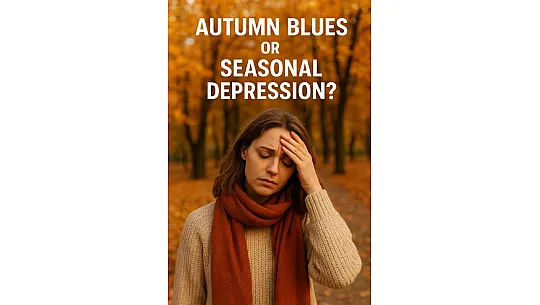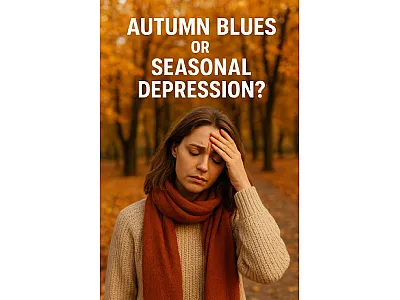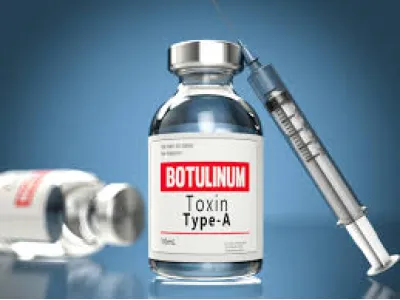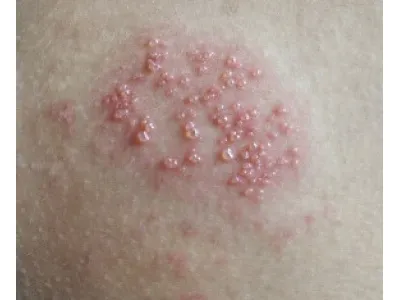Autumn Blues or Seasonal Depression?

Seasonal Affective Disorder: When the Autumn Blues Become Dangerous
With the arrival of autumn, many people notice a drop in energy, increased irritability, and feelings of fatigue. Mild seasonal blues are common, but sometimes this low mood can develop into seasonal affective disorder (SAD), which can affect sleep, work, and overall quality of life. Let’s explore how to tell the difference between normal autumn fatigue and a more serious condition.
Autumn and Mood
As autumn arrives, many people notice changes in their emotional state. Reduced energy, irritability, apathy, and a desire to spend more time indoors are common signs of the so-called “autumn blues.” These experiences are usually linked to environmental changes, such as shorter daylight hours, lower temperatures, and shifts in daily routines. However, not every autumnal mood dip is harmless. In some cases, this low mood can develop into a clinically significant condition known as seasonal affective disorder (SAD). The difference between SAD and ordinary autumn fatigue lies not only in the duration and intensity of symptoms but also in the degree to which it disrupts daily life. Understanding these differences is essential for seeking timely help and preventing worsening symptoms.
What Is Seasonal Affective Disorder?
Seasonal affective disorder is a type of depression that occurs at specific times of the year, most commonly in the fall and winter. Core symptoms of SAD include low mood, loss of interest in usual activities, fatigue, changes in sleep patterns, increased daytime sleepiness, changes in appetite — particularly a craving for carbohydrate-rich foods — and reduced cognitive performance. Unlike mild autumn blues, SAD is persistent, lasting for weeks or months, sometimes until the end of winter. Without timely management, symptoms can intensify, negatively affecting work, studies, and social life. Recognizing SAD early is crucial to maintaining mental and physical well-being.
Causes of Seasonal Affective Disorder
SAD develops from a combination of biological, physiological, and genetic factors. A primary factor is the reduced exposure to natural light during autumn and winter. Lack of light affects circadian rhythms and increases the production of melatonin, a hormone that regulates sleep and biological rhythms. At the same time, levels of serotonin, a neurotransmitter responsible for mood, motivation, and emotional balance, may decrease, leading to irritability and fatigue. Genetics also play a role: individuals with a family history of depression or SAD are more likely to experience seasonal mood changes. Other contributing factors include chronic stress, preexisting health conditions, sleep disturbances, and lifestyle. Together, these factors create conditions where ordinary autumn fatigue may escalate into a clinically significant depressive state.
Symptoms and How They Differ from Normal Autumn Fatigue
Distinguishing SAD from ordinary autumn fatigue is essential. Key differences include:
- Duration: mild autumn blues last a few days, whereas SAD persists for weeks or months.
- Intensity: symptoms are stronger in SAD, with marked fatigue, apathy, and difficulty concentrating.
- Functional impact: people with SAD may struggle with work, school, and social interactions, which is unusual for typical autumn fatigue.
Other common symptoms include irritability, mood swings, feelings of guilt, sleep disturbances, and carbohydrate cravings. If such symptoms occur consistently during a specific season, it is important to consult a mental health professional for proper evaluation and treatment.
Methods of Prevention and Treatment
Several evidence-based strategies can help prevent or reduce SAD symptoms. Light therapy is one of the most effective approaches, using specially designed lamps that mimic natural daylight with an intensity of around 10,000 lux. Morning sessions help normalize circadian rhythms and hormone levels. Regular physical activity also boosts serotonin levels and improves mood. Balanced nutrition — including foods rich in omega-3 fatty acids, B vitamins, and minerals — supports nervous system function. Psychotherapy, especially cognitive-behavioral therapy, helps manage negative thoughts, increase stress resilience, and develop healthier behavioral habits. In more severe cases, medication, such as selective serotonin reuptake inhibitors (SSRIs), may be prescribed to regulate serotonin levels and alleviate depressive symptoms.
Practical Recommendations for Daily Life
People prone to SAD can benefit from several practical strategies. First, it is important to maximize exposure to natural light, spending time outdoors, especially in the morning. Second, maintaining a consistent sleep and eating schedule supports circadian rhythms and overall health. Third, planning activities that bring joy can help maintain emotional balance. Keeping a mood diary to track symptoms over time allows for early recognition of worsening conditions and timely professional intervention. Even small lifestyle adjustments, like short outdoor walks or morning exercise, can significantly improve well-being during the darker months.
* * *
Autumn blues are common and usually harmless, but seasonal affective disorder is more serious. SAD differs in duration, intensity, and its impact on daily life. Recognizing symptoms early and implementing preventive strategies — such as light therapy, physical activity, psychotherapy, and, if necessary, medication — can significantly reduce the seasonal impact on mental and physical health. Understanding the biological mechanisms behind autumn mood changes and seeking help when needed can make the autumn months more manageable and safe for those susceptible to seasonal depression.










